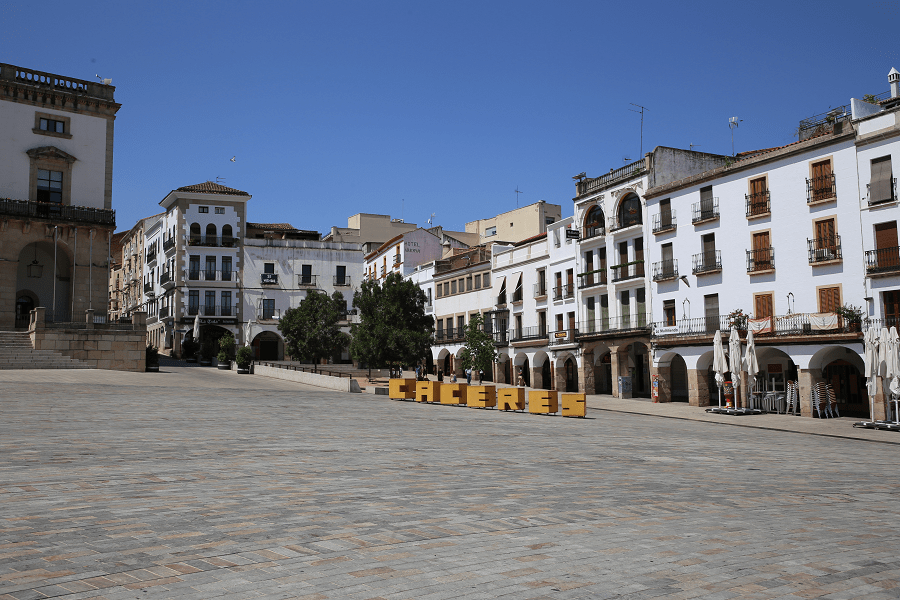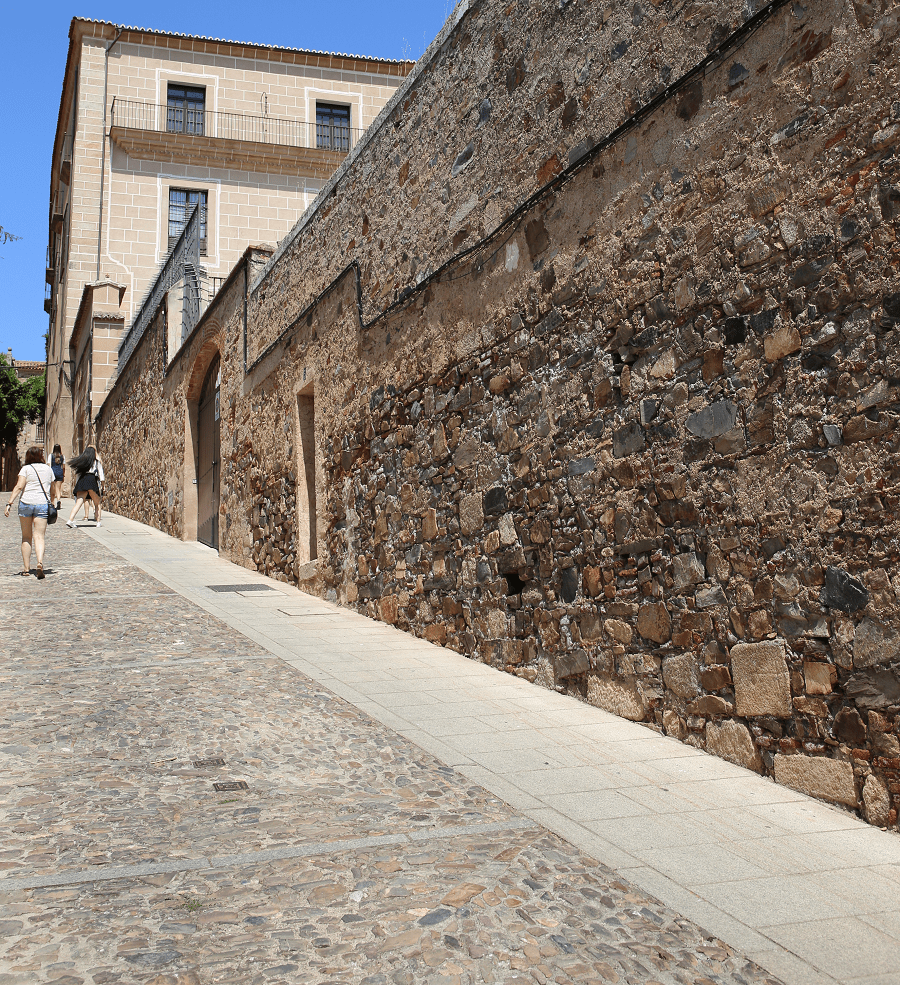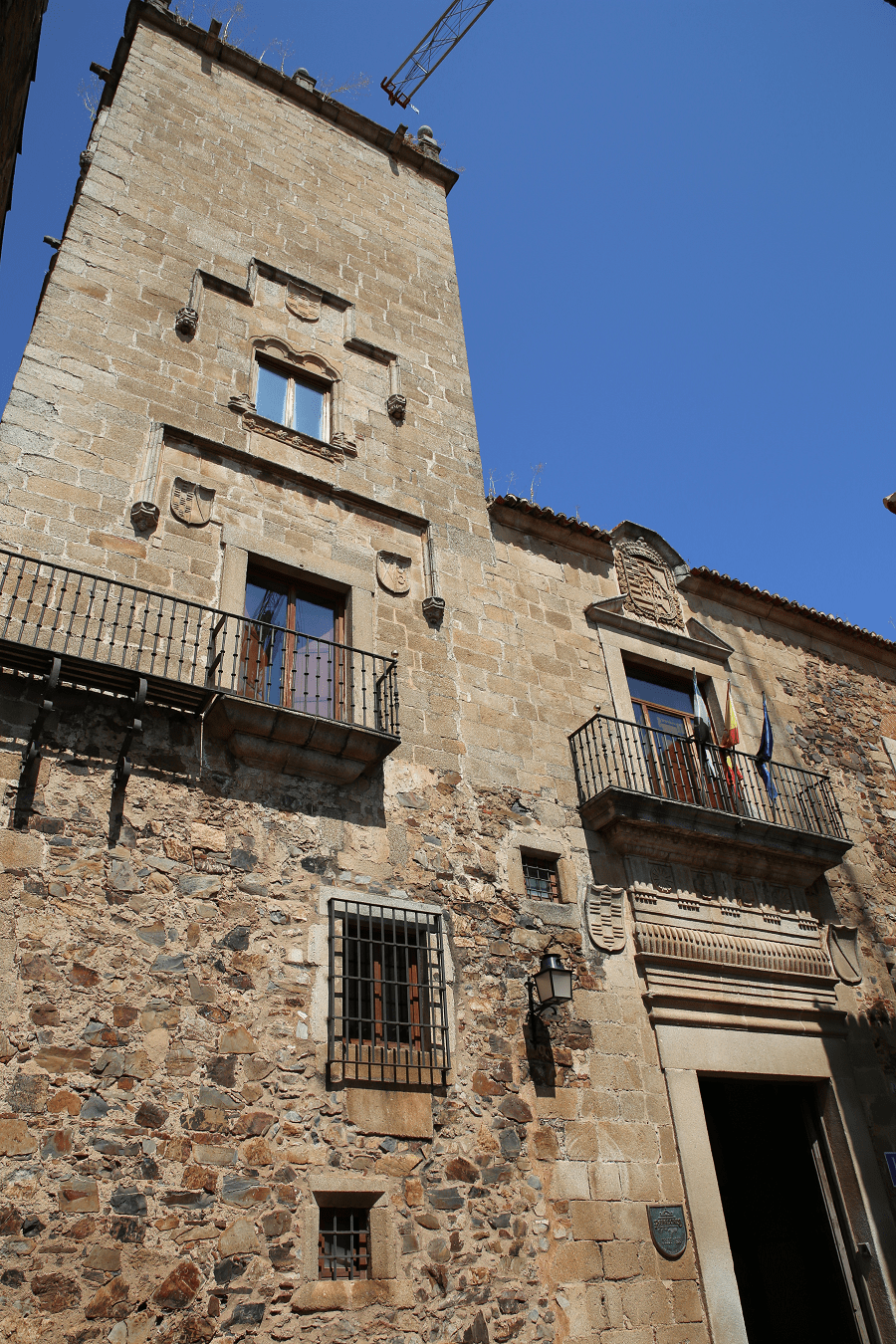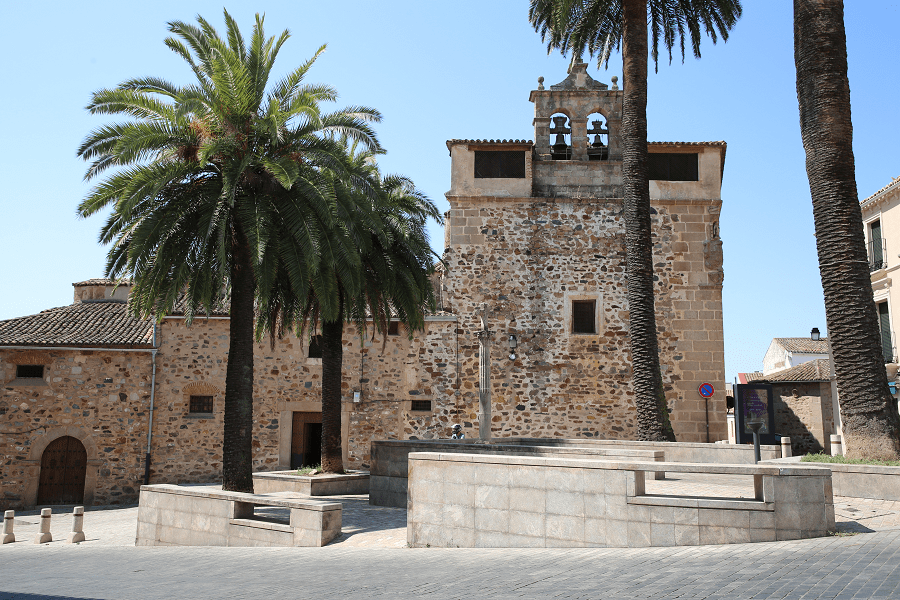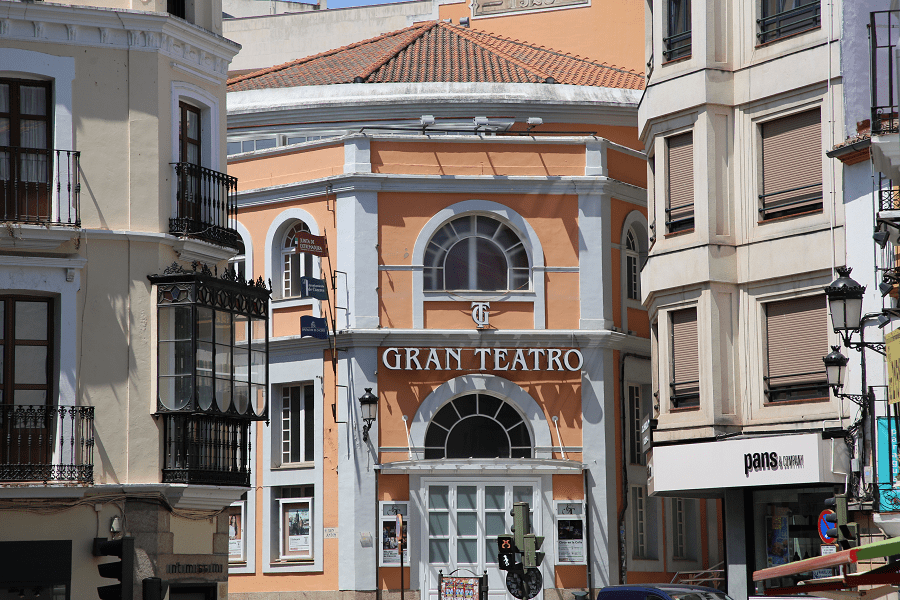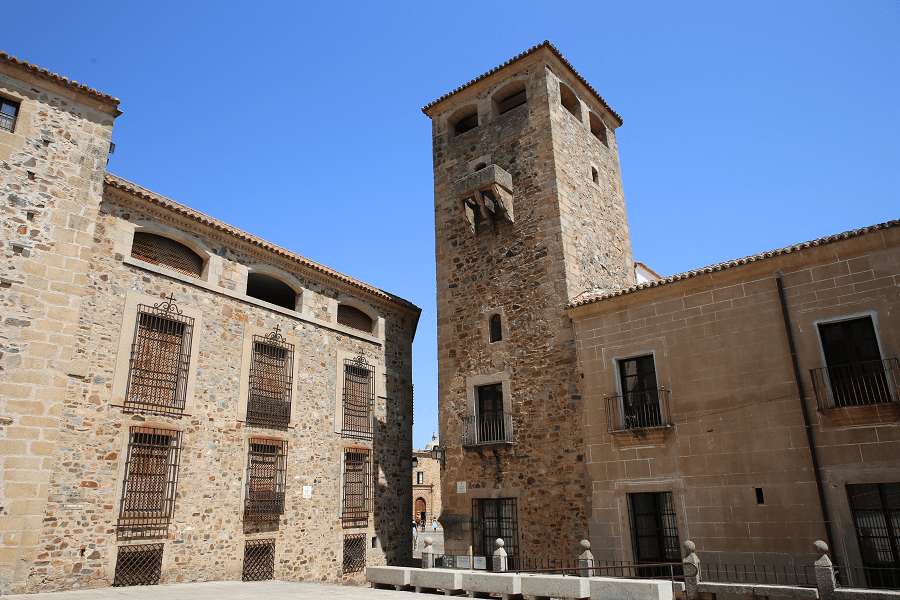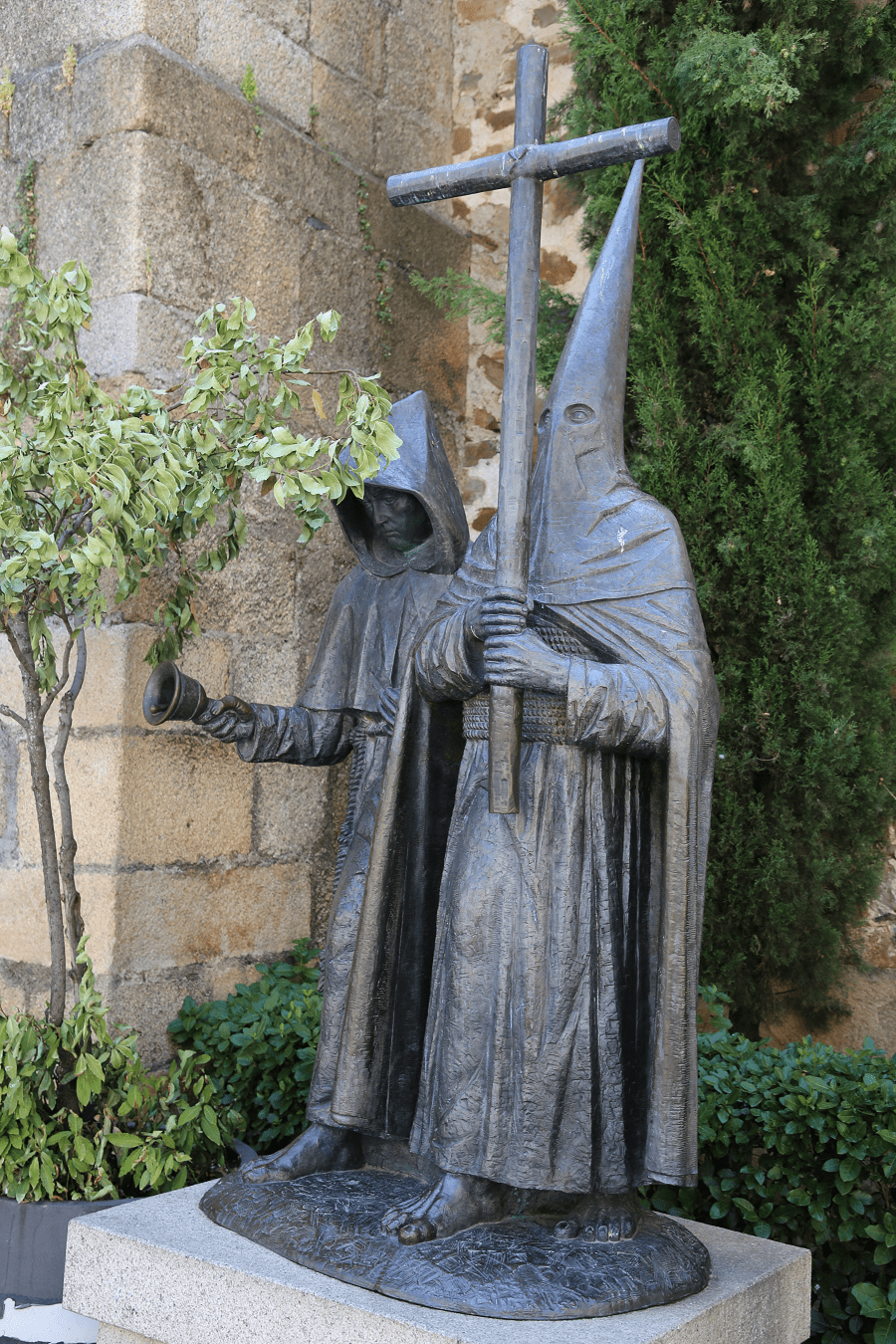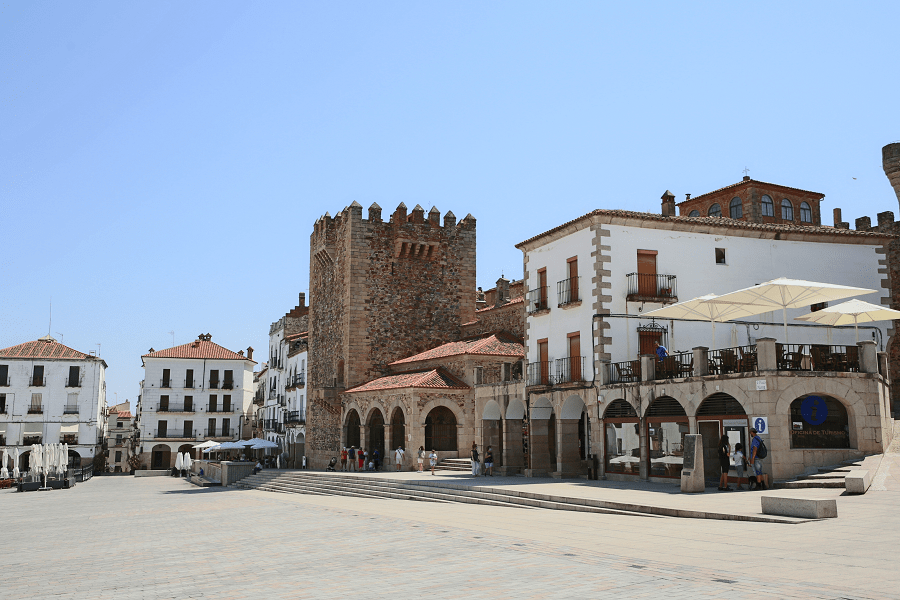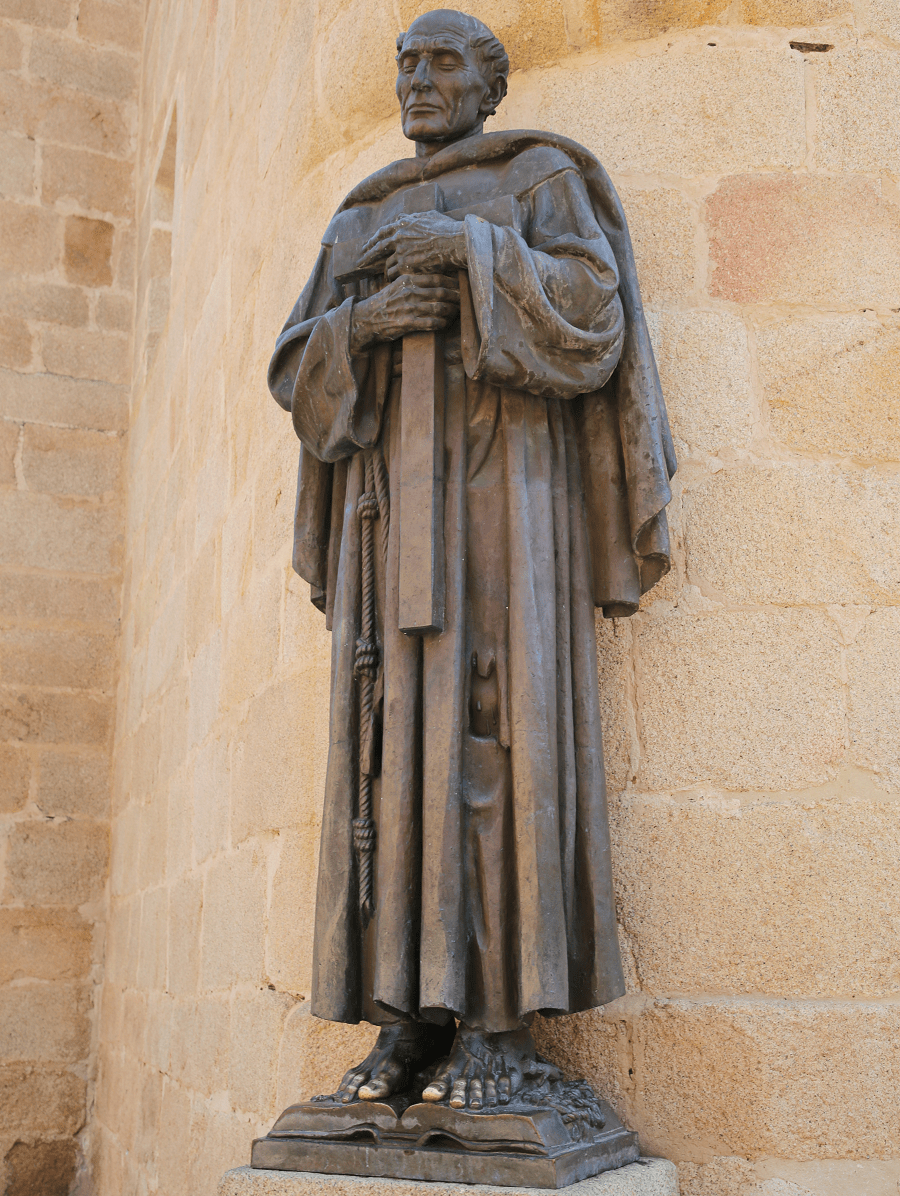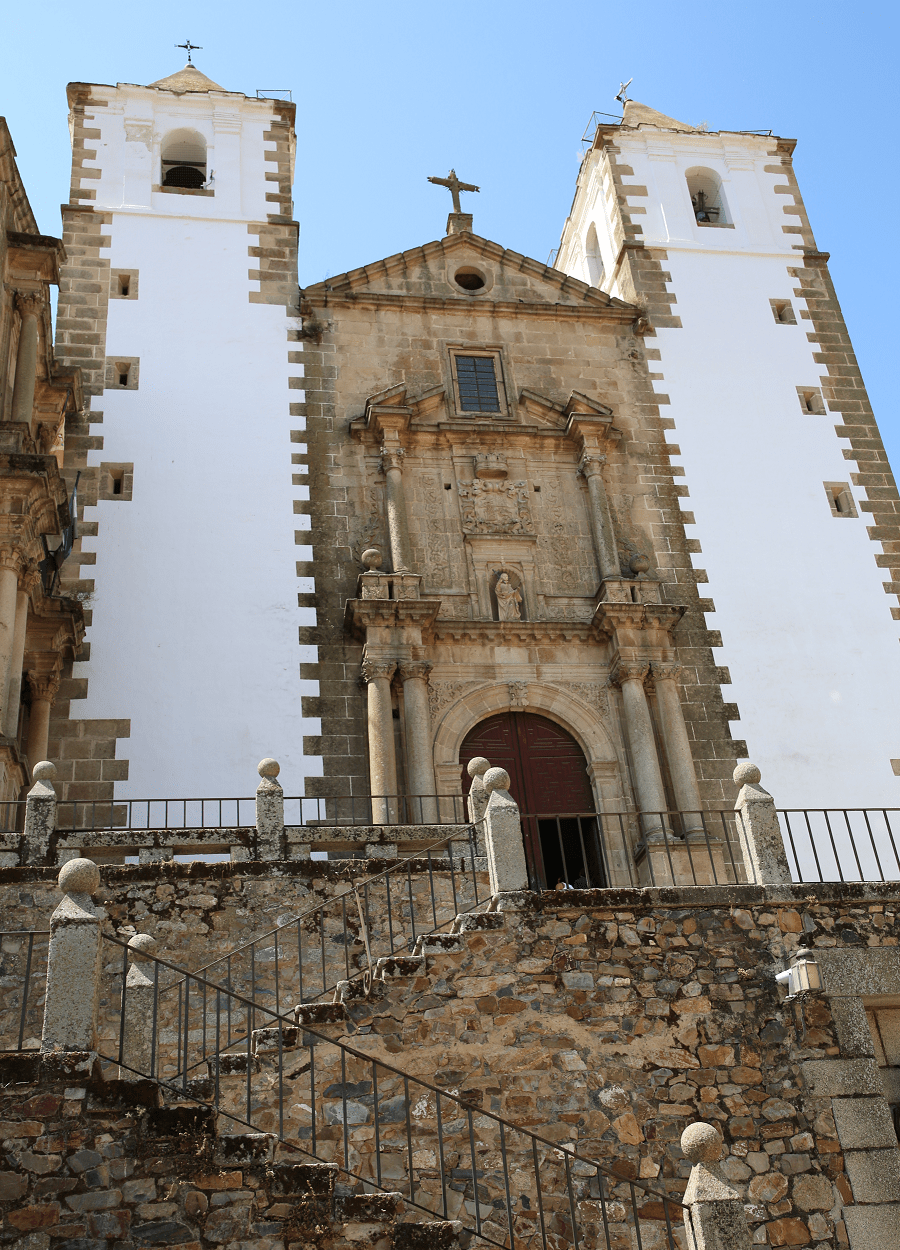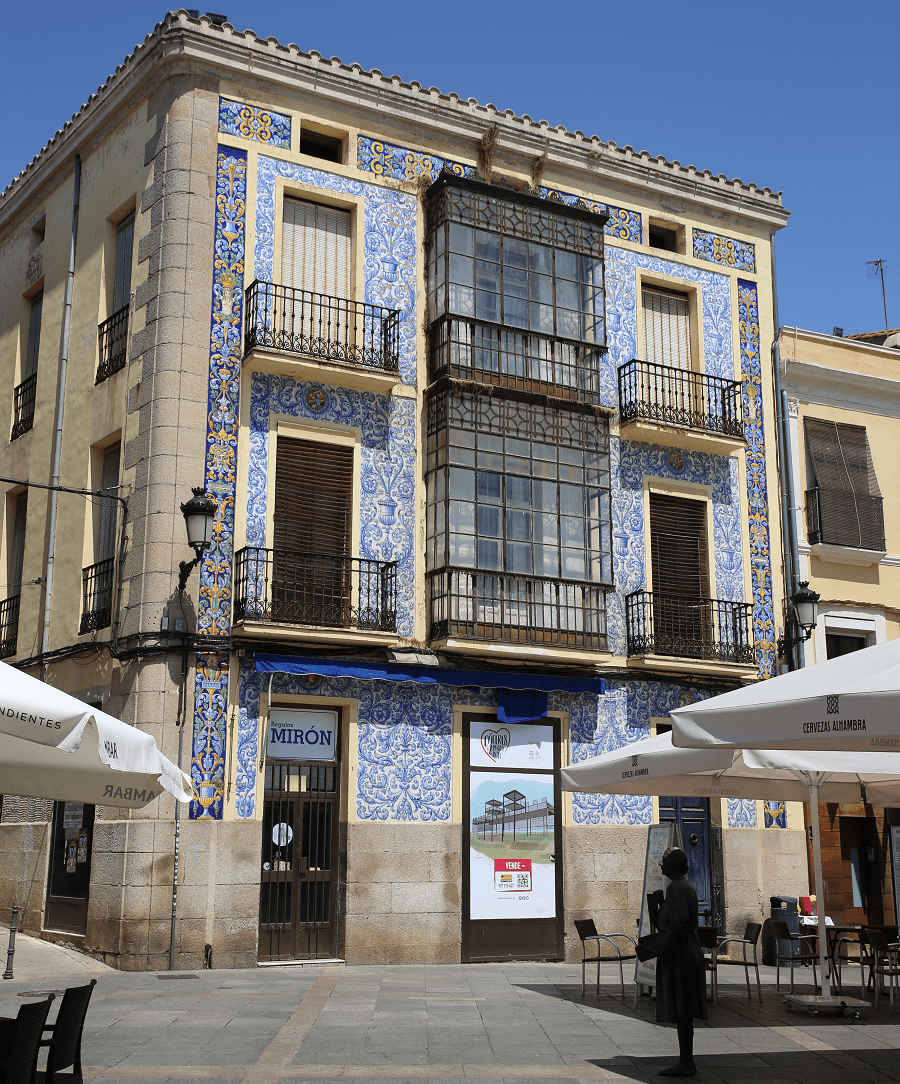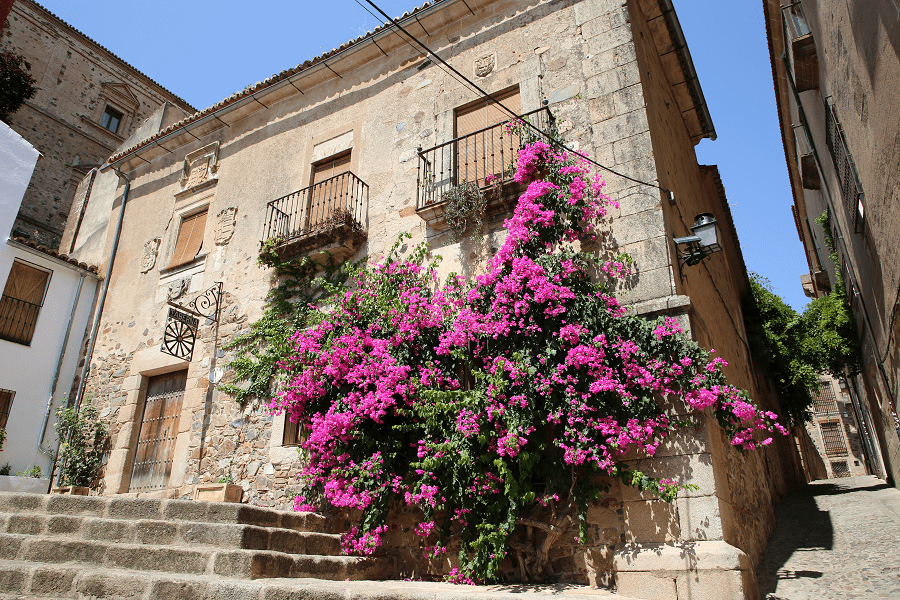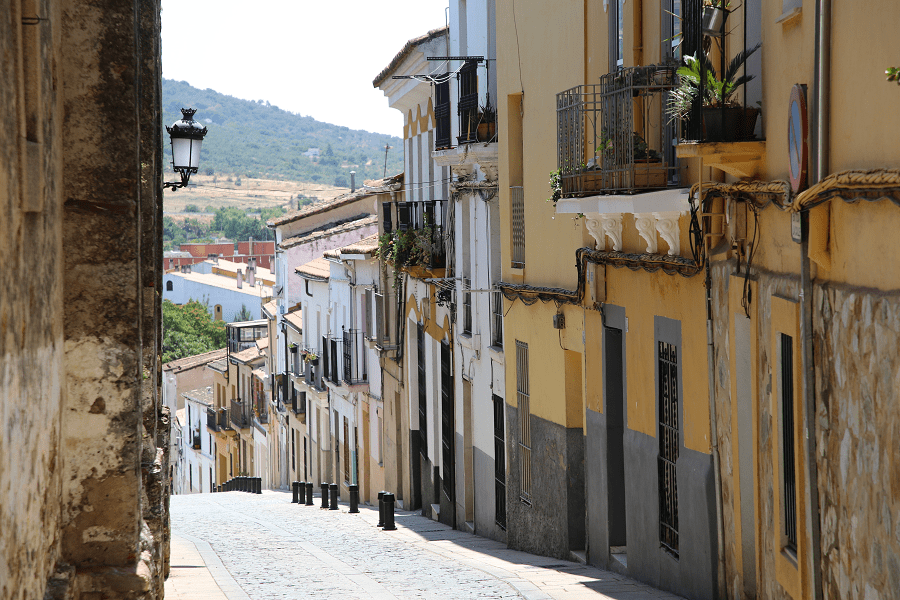Cáceres is a city and municipality located in the center of the autonomous community of Extremadura, Spain. The city has been the capital of the homonymous province since 1822 and the judicial capital of Extremadura since 1790. It is the most populated municipality in the province, with 24.23% of the total population. It is also the largest municipality in Spain with an area of 1750.33 km².
The old city of Cáceres was declared a World Heritage Site by UNESCO in 1986, as it is one of the most complete urban complexes from the Middle Ages and the Renaissance in the world. The Cathedral of Santa María, the Palacio de las Veletas (headquarters of the Provincial Museum of Cáceres), the palaces of Los Golfines (from Above and Below), the Casa del Sol, the Torre de Bujaco or the Arco de la Estrella are some of its most notable monuments.
Likewise, it stands out for being the headquarters of the Cáceres Campus and for its dynamic cultural life throughout the autonomous community.
Tourism and main attractions
The “Monumental City of Cáceres” was declared by the Council of Europe as the Third Monumental Complex of Europe in 1968 (after Prague and Tallinn) and World Heritage by Unesco in 1986.
Cáceres also has other awards: Pomme d ‘Or to “Tourism Merit”, awarded by the International Federation of Tourism Journalists and Writers in 1996; Les Etoiles d’Or du Jumelage, awarded by the European Commission in 1999; The Archival prize awarded to him by the Association for the Recovery of Historical Centers in 2004 and the Citizens 2008 Award granted by the Association of Radio and Digital Television Entities, with the collaboration of the Citizen Audiovisual Council for the support that the citizenship provided to The candidacy for the European Capital of Culture of 2016.
Cáceres is also a member of the Roads Networks of Sefarad, of the Vía de la Plata, being chosen by the Autonomous Community as Cultural Capital of Extremadura Enclave 92, and together with the solidarity effort of the administrations, private companies, official entities and private citizens, aspired between 2003 and 2010 to be European Capital of Culture in the year 2016.
Religious architecture:
The Santa Iglesia Concatedral de Santa María (S.I.C. de Santa María) is the most important Christian temple in the city. José Ramón Mélida indicates that it is the oldest foundation in the city, since it was completed between the 15th and 16th centuries on a 13th-century construction in Mudejar ways and a wooden ceiling.
The church of San Francisco Javier, also known as Iglesia de la Preciosa Sangre. Baroque-style Jesuit church built in the eighteenth century, it was built, next to the adjoining convent, with the fortune of a Jesuit from the Figueroa family, as this was the last link in a growing estate that was dying out. The works began in 1698 and concluded in 1755.
The church of San Mateo is a religious temple of Catholic worship and dedicated to Saint Matthew, Apostle and Evangelist. Since 1982 it has been declared a Historic-Artistic Monument.
The Church of Our Lady of the Rosary and Convent of Santo Domingo was built during the 16th century by the Dominican Order and currently belongs to the Mendicant Order of the Franciscans. It has a semicircular portal on which an image of the Virgin of the Immaculate stands out. Its main altarpiece dating from the middle of the 17th century is dominated by an image of Santo Domingo carried out in the 18th century.
The hermitage of La Paz is an 18th century hermitage in the city’s Plaza Mayor, attached to a side wall of the Bujaco tower, very close to the western canvas of the monumental city wall. Completed in 1750, it stands on the remains of a Renaissance chapel dedicated to Saint Benedict.
The convent of San Pablo is a cloistered convent of Franciscan nuns, it is built on an old hermitage. Its construction is documented in the 15th century, built with elements of the late Gothic style, where a simple flared doorway with a slightly pointed arch stands out. Inside it has a baroque style altarpiece where some interesting images are included, as well as a remarkable goldsmith.
Palaces:
The Episcopal Palace of Cáceres stands in the Plaza de Santa María, in the lower part of the monumental city. Located on the left after entering the enclosure through the Arco de la Estrella, the Episcopal palace of the bishop of the current diocese of Coria – Cáceres stands on a site that until 1261 had occupied a series of shops.
The Palacio de los Golfines de Abajo was built by the Golfín family that settled in the city immediately after its reconquest. Alonso Golfín, son of Pero Alonso Golfín, defender of the cause of Enrique IV, managed to get the Catholic Monarchs to grant in his favor a license to found a mayorazgo for the benefit of his son, Sancho Paredes.
The Carvajal Palace.The main façade is made of granite ashlar masonry and its voussoir façade stands out in a semicircular arch. In it, you can admire in relief, the coat of arms of the Carvajal family, surrounded by a closed alfiz and supported by two carved corbels. In the right corner of the façade there is a simple, undecorated corner balcony with a pointed arch.
The Palacio de las Cigüeñas or Casa de los Cáceres-Ovando is a historical building from the 15th century located in the highest part of the monumental area of the city, in the Plaza de San Pablo, one of the squares on which the Plaza de San Mateo extends.
The Palacio de las Veletas is a building dating from the 15th century. At present, next to the Casa de los Caballos, it forms the facilities in which the Museo de Cáceres is located.
The house of the Solís, or the Sun, Gothic-style house-fortress, it was built in the 15th century and renovated in the 16th. The most significant element of the façade is the family shield, a sun with a human face from which 16 rays come out, eight of them bitten by two dredging or serpent heads, three all crowned by a helmet. An alfiz frames the door with a semicircular arch and voussoirs, under the shield. At the top of the tower, a continuation of the façade, there is a semicircular machicolation with cross-shaped loopholes.
The Palace of the Golfines de Arriba is a medieval building, the construction lasted during the 14th and 15th centuries. Of the four initial towers that they built in its corners, only three remain in which the family’s coats of arms and shields can still be seen. In the center of the construction is the keep, built in 1513.
The Toledo-Moctezuma Palace is a medieval Renaissance-style building. It was built during the 15th century, although its current appearance is due to the restorations carried out in the late 16th and early 17th centuries.
Other interesting places:
Plaza Mayor, is a monumental neighborhood and public space of Cáceres, the main entry point to the monumental city. It borders on the east with part of the wall, the best known, with the Bujaco tower, the Arco de la Estrella and the Torre de los Púlpitos. In the southern part is the town hall and the forum of the Balbos. Here starts the Pintores street, the most commercial of Cáceres. On the west facade its arcades stand out and it is plagued by bars, restaurants and various shops. In the center of the square there is a promenade built in 2001. In 2011 the square was remodeled.
The Plaza de San Jorge is framed by the church of San Francisco Javier, the house of the Becerra, a group of tourist shops and the tower of the Palace of the Golfines de Abajo.
The Arco de la Estrella is the main gateway to the walled enclosure since the 15th century. Located next to the Bujaco tower, it was opened in the 15th century at the same point where there was a door to allow the passage of carriages from the Plaza Mayor, by then the wall had lost much of its defensive nature. Then it was called, for obvious reasons, New door.
Cuisine and best restaurants
The gastronomy of Cáceres is rich and varied, with notable influences from the different cultures, such as the Arab and the Sephardic, as well as influences from the pastoral and livestock life, especially in the most homemade gastronomy. In addition, the cuisine of convents and monasteries in various places in the province of Cáceres such as those of San Benito de Alcántara, Yuste or Guadalupe has left a complete recipe book of dishes and refined desserts.
Its gastronomy is rich by using ingredients with a designation of origin (PDO) and geographical indication (PGI), such as Dehesa de Extremadura Iberian ham, Torta del Casar cheese, Ibores cheese, Ribera del Guadiana wines, Gata-Hurdes oil, Vera paprika, Jerte cherry, Villuercas-Ibores honey, Extremadura veal, Extremadura lamb (CORDEREX) and Tierra de Extremadura wines.
There are five Michelin list restaurants in the city:
Atrio, Plaza San Mateo 1, 185 EUR • Creative cuisine (Two stars)
La Casa del Sol, Cuesta de la Compañía, 37 – 55 EUR • Contemporary cuisine
Madruelo, Camberos 2, 30 – 50 EUR • Traditional Cuisine
Javier Martín, Juan Solano Pedrero 15, 30 – 65 EUR • Contemporary cuisine
alBalat, Avenida Ruta de la Plata 4, 15 – 50 EUR • Traditional Cuisine
How to get to?
The city is served by the Cáceres railway station.
There is no international airport in the city today. Earlier there were plans to build the Extremadura International Airport between the EX-100 and the municipalities of Aldea del Cano and Casas de Don Antonio, 17 km from the city.
Distance to the main cities of Extremadura:
From Merida 49 min (73.7 km) via A-66
From Plasencia 52 min (80.6 km) via A-66
From Badajoz 1 hr 17 min (92.6 km) via N-523
From Madrid 2 hr 55 min (296 km) via Autovía del Suroeste/A-5
Main information
Area: 1750, 23 sq. km (municipality)
Coordinates: 39°28′23″N 6°22′16″W
Population: 96 255
Languages: Spanish
Currency: Euro
Visa: Schengen
Time: Central European UTC +1



